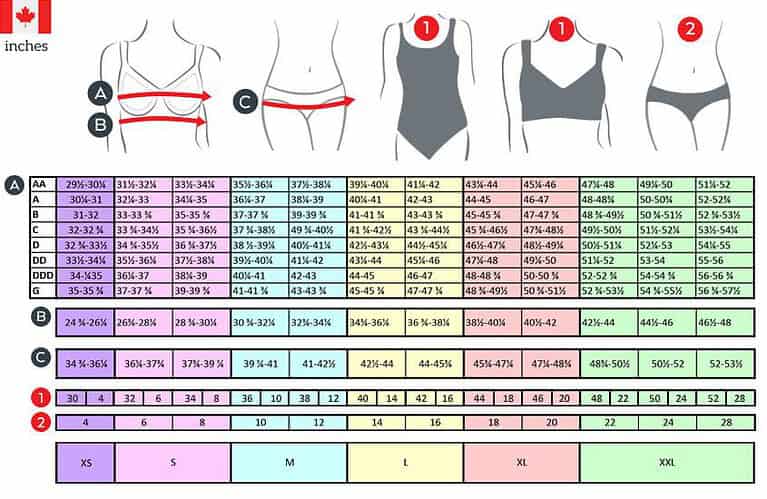
How to measure your head for a wig
There are thousands of wigs in the market today with different styles, but unless you know the measure of your head, you can never get the wig right. Most of the average woman’s head comes in at 22.5 inches, but that’s not all the women.
Unless you have an average head, you will look ridiculous for wearing either a small or more significant weave. Sadly, not many wigs come in petite size or even large. But most of the brands say they can customize a wig for you.
For you to know the right size of your wig, you must measure the circumference of your head.
Lingerie & swimwear measuring guide

Band Size (underbust)
First measure from the middle of your chest, underneath the remaining breast where the bra band sits, to the center of your spine (diagram A).
Double this measurement to get your band size (this is the ‘underbust’ measurement shown on the picture).
Cup Size (overbust)
Now measure from the middle of your chest to the center of your spine, but this time over the fullest part of your remaining breast (diagram B).
Double this figure to get your overbust measurement.
Example:
Band size: Measurement equals 14½ inches. 14½ x 2 = 29 Band size is 29 inches.
Cup size: The measurement is 17½ inches. 17½ x 2 = 35
Bra size: 29 inches underbust and 35 inches overbust, gives a bra size of 34B
Bra size
Use the chart below to find your correct bra size. Remember this is only a guide. For a perfect fit, size up or down as needed.

Mostly a concave chest wall with some ribs creating contours on surgical side, due to a radical mastectomy
Sometimes called a Halstead Radical, this surgery is the removal of the breast tissue and surrounding tissue frequently including the pectoral muscle and lymph nodes.

Mostly flat surgical side with no remaining breast or tissue, usually a result of a simple mastectomy
The entire breast is removed in this surgery, but the pectoralis major muscle is left intact. No lymph nodes are removed.

Excess skin remaining on chest wall, though not necessarily a breast
Removal of the breast and some of the surrounding affected tissue–may include removal of some lymph nodes as well.

Fullness on surgery side, sometimes a result of reconstructive surgery
A surgery when the plastic surgeon creates a breast shape using an implant, tissue from another place of the body (autologous), or both.

Asymmetry or a small remaining breast
This surgery, sometimes referred to as a lumpectomy or partial mastectomy, conserves breast tissue while removing a tumor or lymph nodes from the breast.
